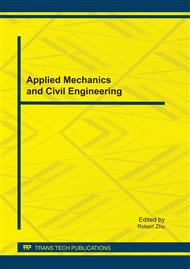p.221
p.227
p.232
p.237
p.243
p.250
p.256
p.262
p.269
Simulation Analysis of Concrete Dam’s Joints Based on Elastic-Plastic Creep Model
Abstract:
When the stress of concrete dam joints during the whole construction process is simulated with the elastic creep model, the simulated result will be larger than the real value if the elastic modulus of the joints take the minimum value and the plastic yield and cracking of joints are not considered; while problems like iterative convergence will appear if the contact element or thin-layer element is applied to the analysis. In consideration of the above factors, an elastic-plastic model, obtained by connecting one or two Bingham elements in series in the conventional model, was carried out for the stress simulation analysis of concrete joints based on the visco-elastic-plastic theory. From the discussion of the feasibility of setting up longitudinal joints in the bottom hole dam section, it is concluded that the concrete joints can be simulated by elastic-plastic creep model presented in this paper, for this method can fairly reflect the deformation stress condition of the concrete joints; in addition, it neither increases the complexity of program development, nor is related to iterative convergence.
Info:
Periodical:
Pages:
243-249
Citation:
Online since:
October 2011
Authors:
Keywords:
Price:
Сopyright:
© 2012 Trans Tech Publications Ltd. All Rights Reserved
Share:
Citation:


